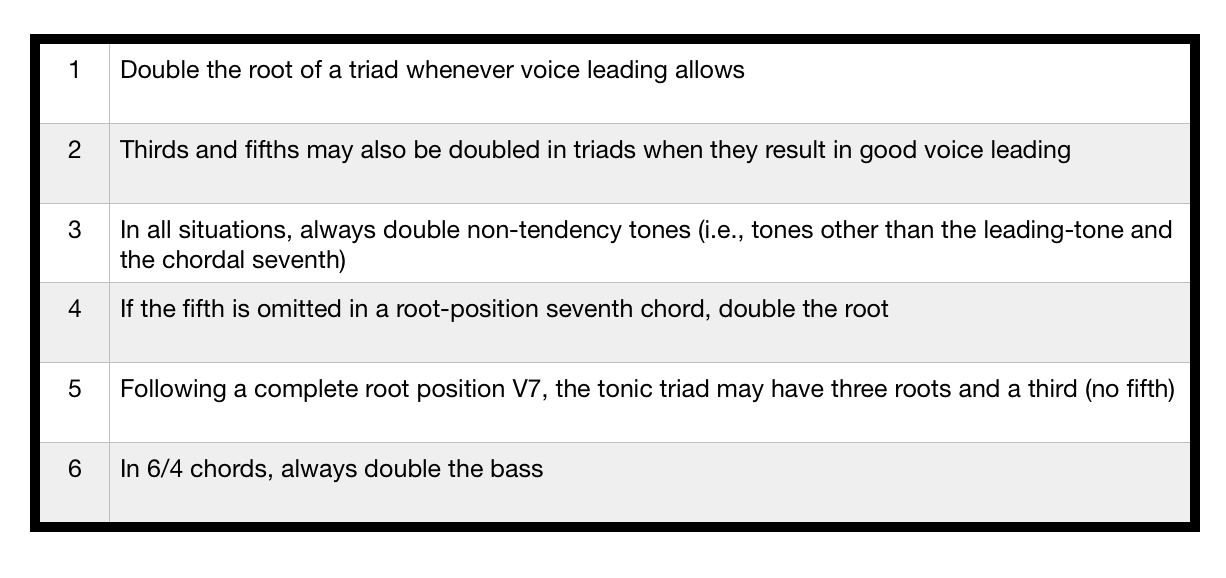Mickey Hansen
AP Music Theory 🎶
72 resourcesSee Units
4.2: SATB Voice Leading
Raise your hand if you are a soprano!

Raise your hand if you are a tenor!

Don't know yet? Not a problem. However, it will be helpful to get to know your voice range if you haven't already. On the AP Music Theory test, you will need to sing for some of the FRQs and also be able to transpose a written piece of music into your range. If you haven't done much singing before, it's time to start clearing out those cobwebs in your vocal chords!

Musical lines, whether in instrumental or vocal pieces, may be described using the vocal parts: soprano, alto, tenor, bass.
When we examine a composition in four-part harmonies, we will be using the SATB texture to complete a Roman-numeral Analysis <hyperlink to unit 3.3>.
When we realize (aka analyze) the figured bass of a composition, all chords must be spelled correctly, with all necessary accidentals, and have a correct Roman-numeral analysis.
When filling in the chord tones of a Roman-numeral analysis, such as in the AP Music Theory test FRQs, there are certain chord tones that are good to double, and those that are not good to double. Remember these rules!

🦜 Polly wants a progress tracker: Which voice part is typically a higher male voice? Which voice part is typically a lower female voice?
Browse Study Guides By Unit
🎵Unit 1 – Music Fundamentals I (Pitch, Major Scales and Key Signatures, Rhythm, Meter, and Expressive Elements)
🎶Unit 2 – Music Fundamentals II (Minor Scales and Key Signatures, Melody, Timbre, and Texture)
🎻Unit 3 – Music Fundamentals III (Triads and Seventh Chords)
🎹Unit 4 – Harmony and Voice Leading I (Chord Function, Cadence, and Phrase)
🎸Unit 5: Harmony and Voice Leading II: Chord Progressions and Predominant Function
🎤Unit 7 – Harmony and Voice Leading IV (Secondary Function)
📝Exam Skills
📆Big Reviews: Finals & Exam Prep

Fiveable
Resources
© 2023 Fiveable Inc. All rights reserved.